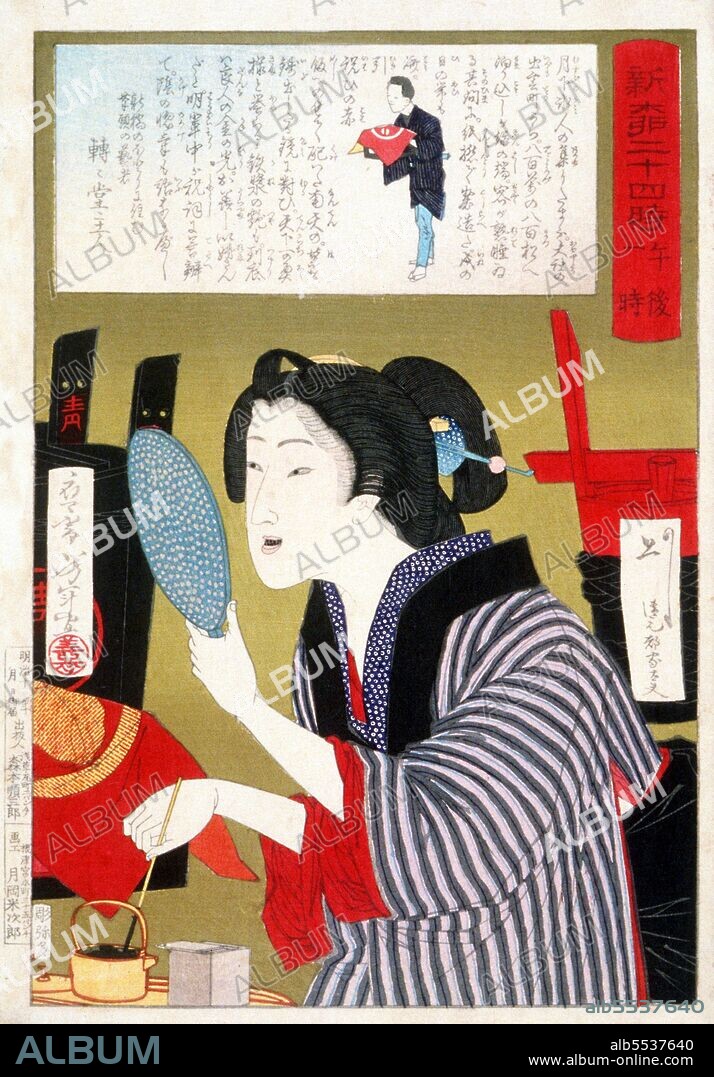alb5537640
Japan: A Geisha blackening her teeth. From the series '24 Hours in Shinbashi and Yanagibashi'. Tsukioka Yoshitoshi (1839-1892),1880.

|
Añadir a otro lightbox |
|
Añadir a otro lightbox |



¿Ya tienes cuenta? Iniciar sesión
¿No tienes cuenta? Regístrate
Compra esta imagen

Título:
Japan: A Geisha blackening her teeth. From the series '24 Hours in Shinbashi and Yanagibashi'. Tsukioka Yoshitoshi (1839-1892),1880.
Descripción:
Ver traducción automática
Ohaguro (????) is a custom of dyeing one's teeth black. It was most popular in Japan until the Meiji era. Tooth painting was also known and practised in the southeastern parts of China and Southeast Asia. Dyeing was mainly done by married women, though occasionally men did it as well. It was also beneficial, as it prevented tooth decay, in a similar fashion to modern dental sealants. Tsukioka Yoshitoshi (30 April 1839 – 9 June 1892) (Japanese: ?? ??; also named Taiso Yoshitoshi ?? ??) was a Japanese artist and Ukiyo-e woodblock print master. He is widely recognized as the last great master of Ukiyo-e, a type of Japanese woodblock printing. He is additionally regarded as one of the form's greatest innovators. His career spanned two eras – the last years of Edo period Japan, and the first years of modern Japan following the Meiji Restoration. Like many Japanese, Yoshitoshi was interested in new things from the rest of the world, but over time he became increasingly concerned with the loss of many aspects of traditional Japanese culture, among them traditional woodblock printing. By the end of his career, Yoshitoshi was in an almost single-handed struggle against time and technology. As he worked on in the old manner, Japan was adopting Western mass reproduction methods like photography and lithography. Nonetheless, in a Japan that was turning away from its own past, he almost singlehandedly managed to push the traditional Japanese woodblock print to a new level, before it effectively died with him.
Crédito:
Album / Pictures from History/Universal Images Group
Autorizaciones:
Modelo: No - Propiedad: No
¿Preguntas relacionadas con los derechos?
¿Preguntas relacionadas con los derechos?
Tamaño imagen:
3500 x 5022 px | 50.3 MB
Tamaño impresión:
29.6 x 42.5 cm | 11.7 x 16.7 in (300 dpi)
 Pinterest
Pinterest Twitter
Twitter Facebook
Facebook Copiar enlace
Copiar enlace Email
Email
